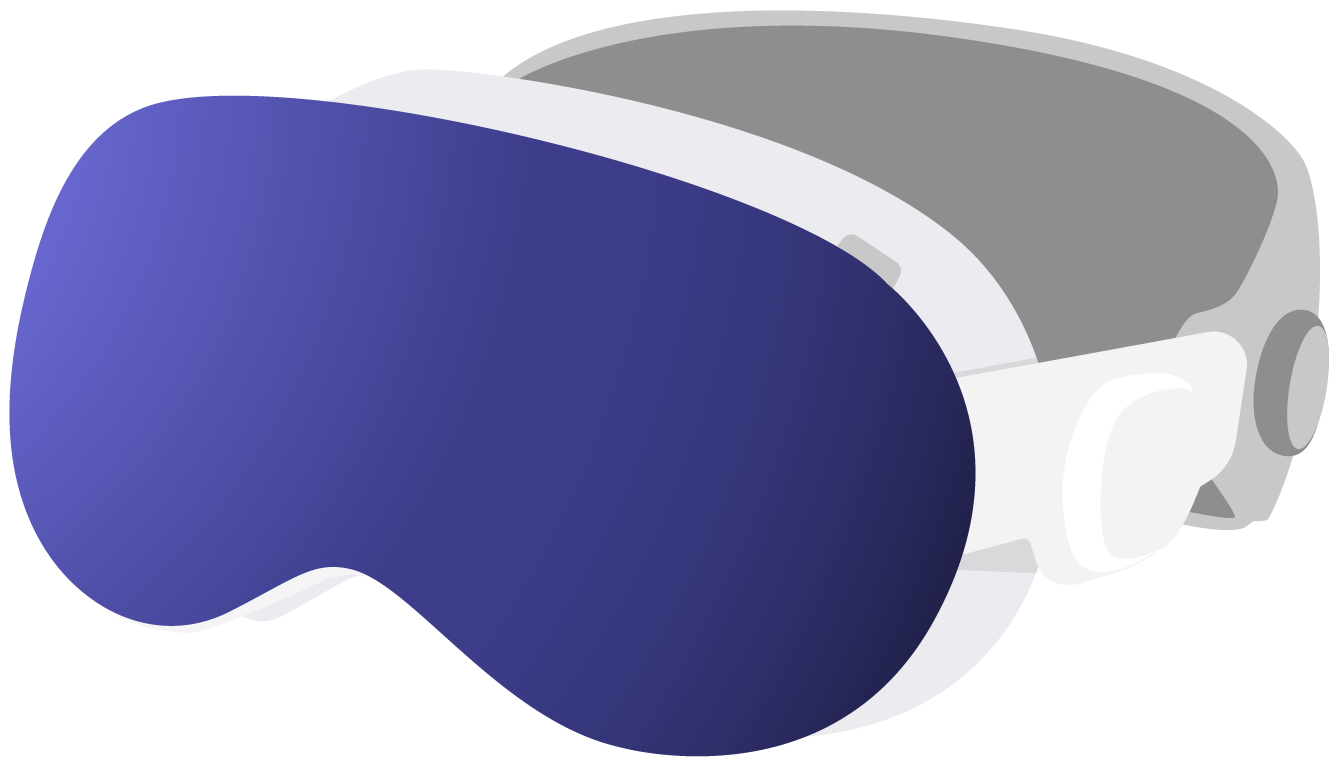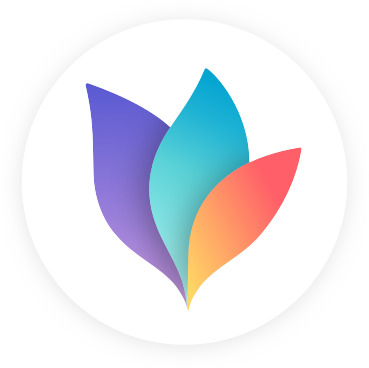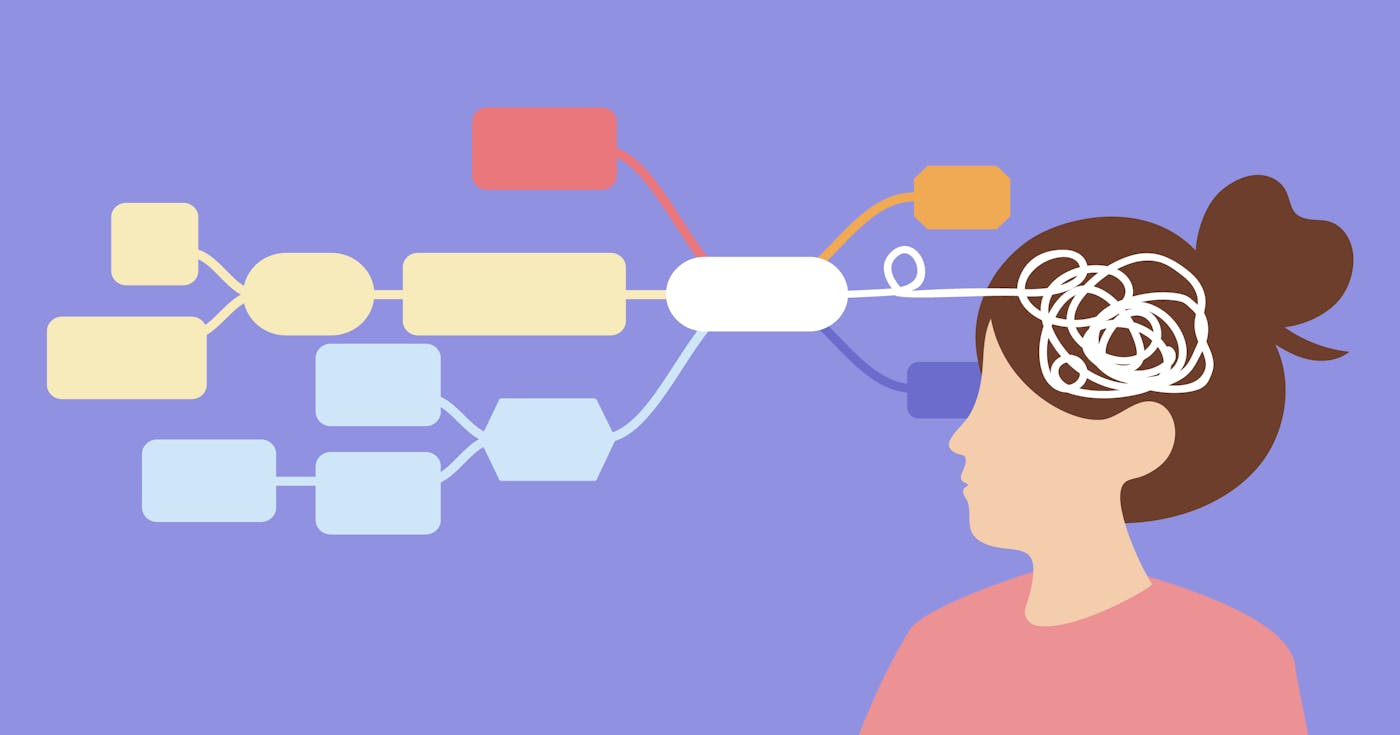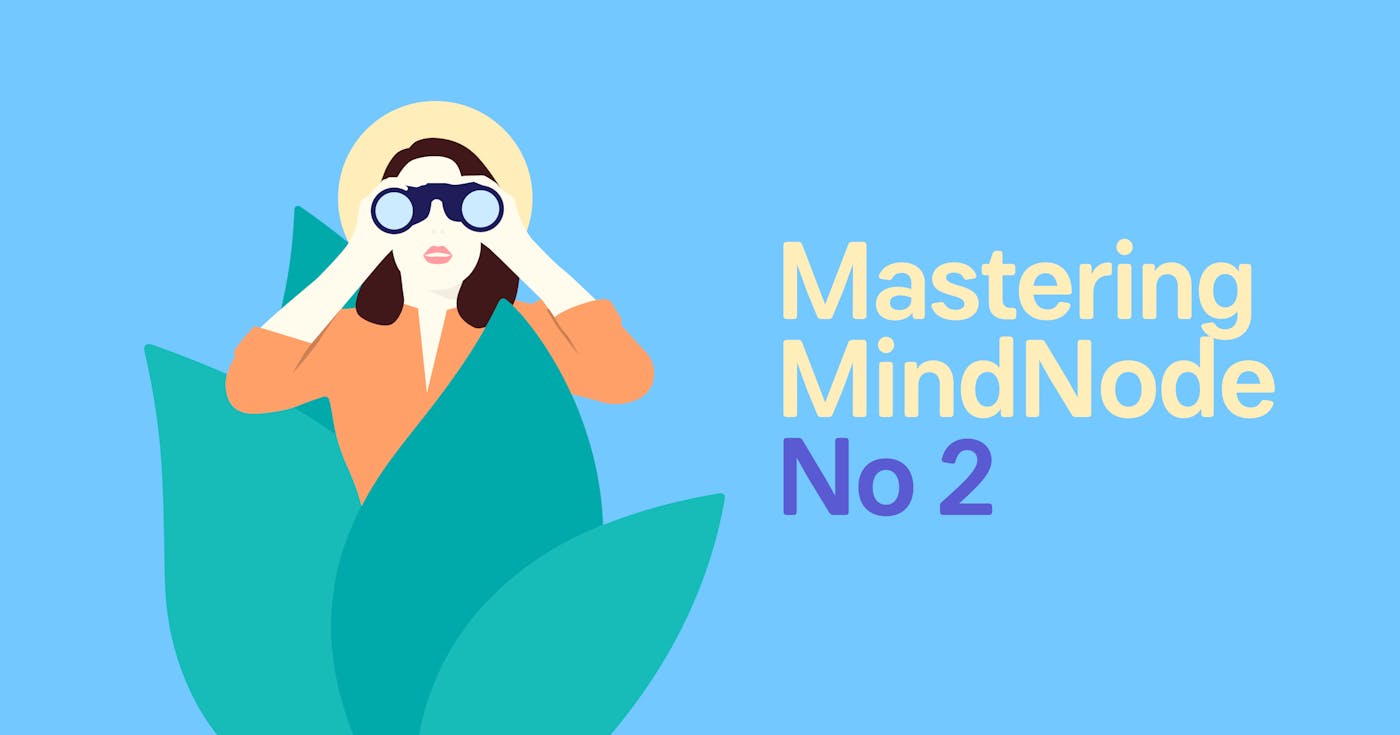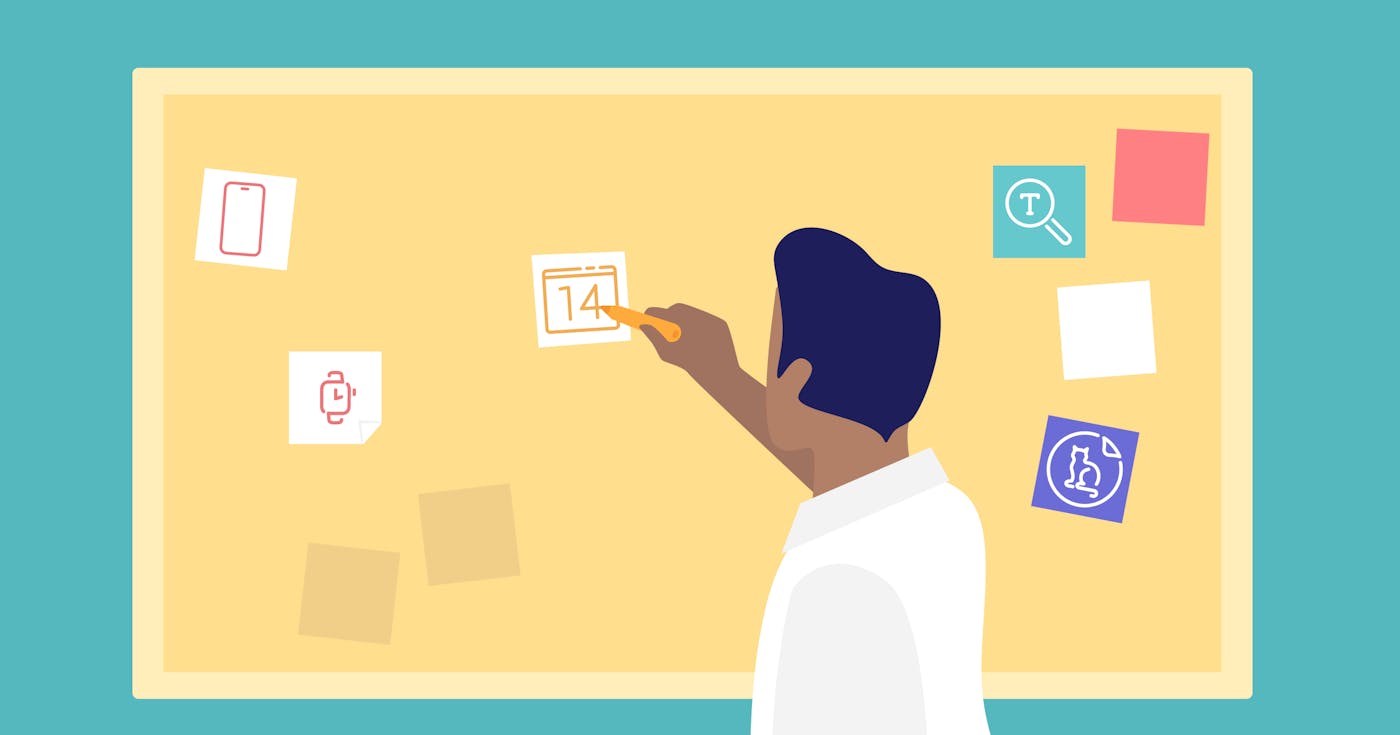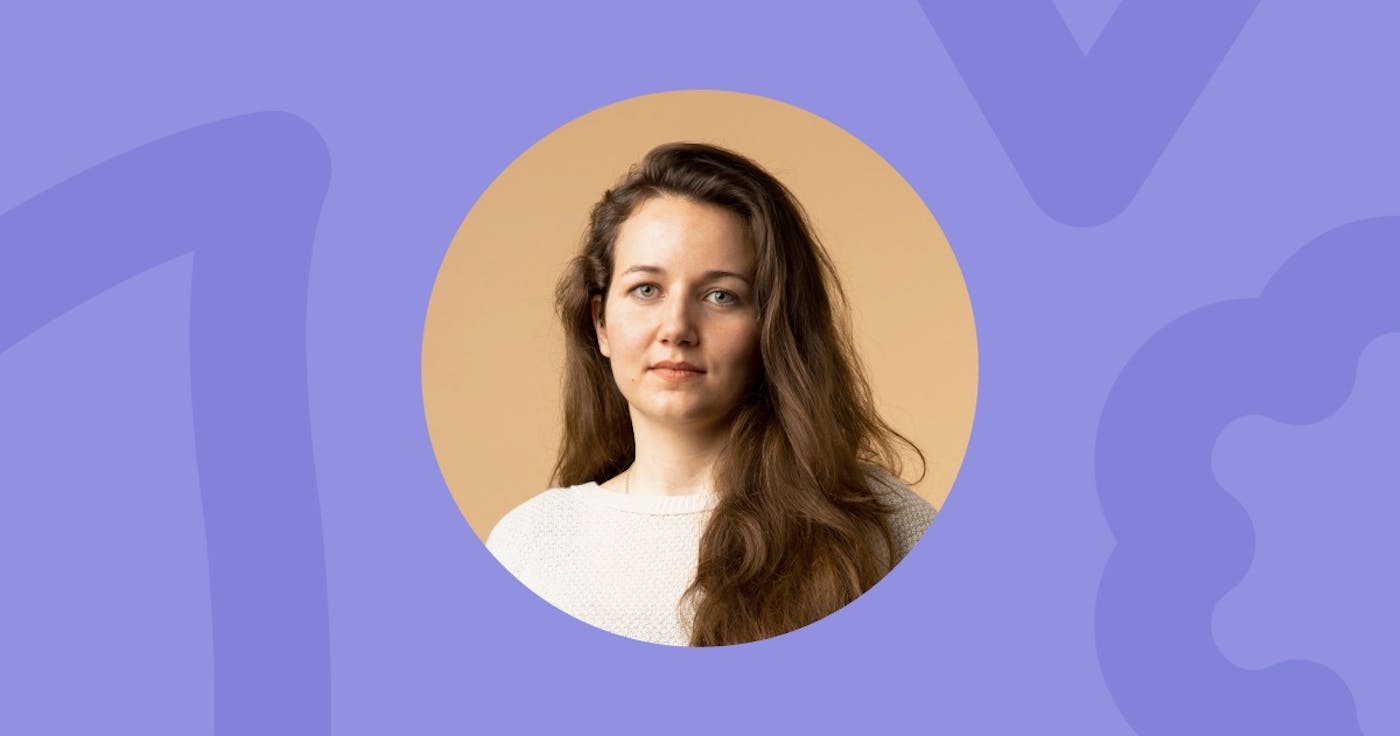
How To Plan Your Bachelor's Thesis
Would you be so kind to give us a little intro on yourself?
I am Vanessa, the longest standing member of user support at MindNode and I also do quality assurance. I grew up in Bavaria, in a little town near Munich at a very pretty lake.
I live in Vienna for 13 years now and first studied physics and later socioeconomics. Then, I slipped into the IT world with a job at MindNode which I started in my last bachelor semester in socioeconomics because I still had to finish my bachelor thesis. This was like the perfect opportunity.
When and how did you discover mind mapping?
My first experience with mind mapping was when I was 12 or 13. My best friend and I sort of created a mind map of all our friends and their relationships, who’s into whom, and all of that kind of very important stuff when you’re 13. So that’s the first thing that comes to mind when I think of my first contact with mind mapping. And then, I guess it really was with starting my job at MindNode. And now, they’re omnipresent.
How have you used it ever since?
I use it a lot for taking notes during meetings and for planning workflows. I now also have a packing list for various vacations in the form of a mind map. Also, every big project, like moving houses or starting something new, always starts with a mind map and then ends up as several mind maps.
What kind of workflows do you use mind mapping for?
One that we've documented over time is the onboarding of new customers and new employees, and we use MindNode specifically for support. We outline the different phases of the onboarding process, what tasks people should be able to handle independently by a certain point, and where they can find all the necessary information.
As you said, you’re using mind mapping for business purposes as well as personally. How has it helped you, especially beyond just packing lists for travel?
The biggest help was when I was writing my bachelor’s thesis. I started by outlining the thesis using a mind map, which was really useful because I didn’t have a clear sense of the structure at first. The mind map made it easy to move chapters around and adjust the flow, so I could see what made the most sense logically.
I also used mind maps to organize quotes from the books I was reading, adding notes with references like book titles, page numbers, and so on. Since I’m a big procrastinator, I had gathered all this material but hadn’t written much. As the deadline approached, I ended up writing about three-quarters of the thesis in one weekend. The mind map was a lifesaver—its search feature made it easy to find related quotes and ideas and piece everything together.
In the end, I got an A, and my professor complimented how well-structured the thesis was. I knew the mind map had made all the difference in helping me organize and rearrange my ideas, something that wouldn’t have been possible with a regular document.

You mentioned that search is one of your favorite features. Are there any other particular features in MindNode that you really enjoy?
Yes, absolutely! I would have loved to have the ability to edit the outline back when I was writing my thesis, and now that’s possible, which is great. Another feature I truly enjoy is the ability to add notes. It’s so helpful to have the main idea in the node and then use notes to go deeper without cluttering the mind map. For example, when I was working on my thesis, I could keep the key points in the node and add all the repetitive details — like who wrote the book and page numbers — in the notes. That kept things tidy.
The outline view is another feature I love. It’s super helpful to switch between the mind map and outline view, letting me scroll through the content and see how it would flow as a text. It’s great for organizing ideas and figuring out the right structure.
Oh, and keyboard shortcuts! They might not be a “feature” in the traditional sense, but once I started using them, everything became so much faster and more efficient.
What’s your favorite shortcut?
I think my favorite is the shortcut for notes, and I’m laughing because we’ve changed it two or three times since I’ve been here! I actually forgot it after the last update, but we recently brought it back to the original, which is Shift-Command-K.
It’s funny because even though the logic behind the shortcut could be different, a lot of users had developed muscle memory for the original one. We got so many emails from people saying they couldn’t open notes because they were so used to the old shortcut. So, eventually, we went back to it to keep our users happy!
On which device do you use MindNode the most on, and why?
I most like to use it on the iPad, which is such a common answer, but for a good reason! Every time I do, I think, “Oh, this is great!” But since I spend so much time on my MacBook, I mostly end up using it there. On the iPad, the ability to tap directly on the screen and interact with the mind map makes it feel more alive and engaging.
Final question, Vanessa: What makes your creativity spark?
Having enough time and not feeling under pressure really helps me. When I can focus without being overwhelmed by responsibilities, creativity flows more easily. I try to carve out dedicated time, which creates the mental space needed for creative thinking.
Being in nature is another big inspiration for me. It helps me stay present and clear my mind of distractions. The beauty and complexity of the natural world often spark my creativity and lead to new ideas.
Download Vanessa's mind map
Download "Gliederung Arbeitswelt.mindnode"
Get MindNode
Download MindNode now and start exploring your ideas in a whole new way.



